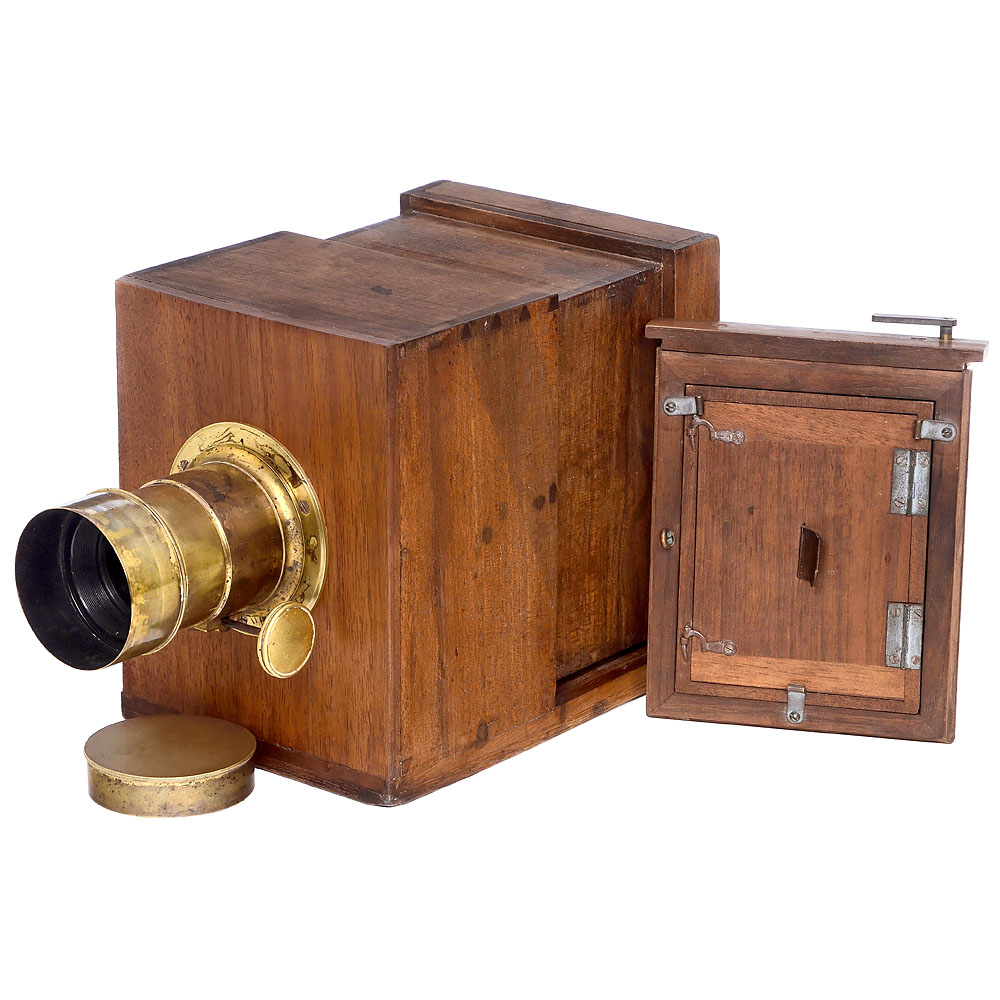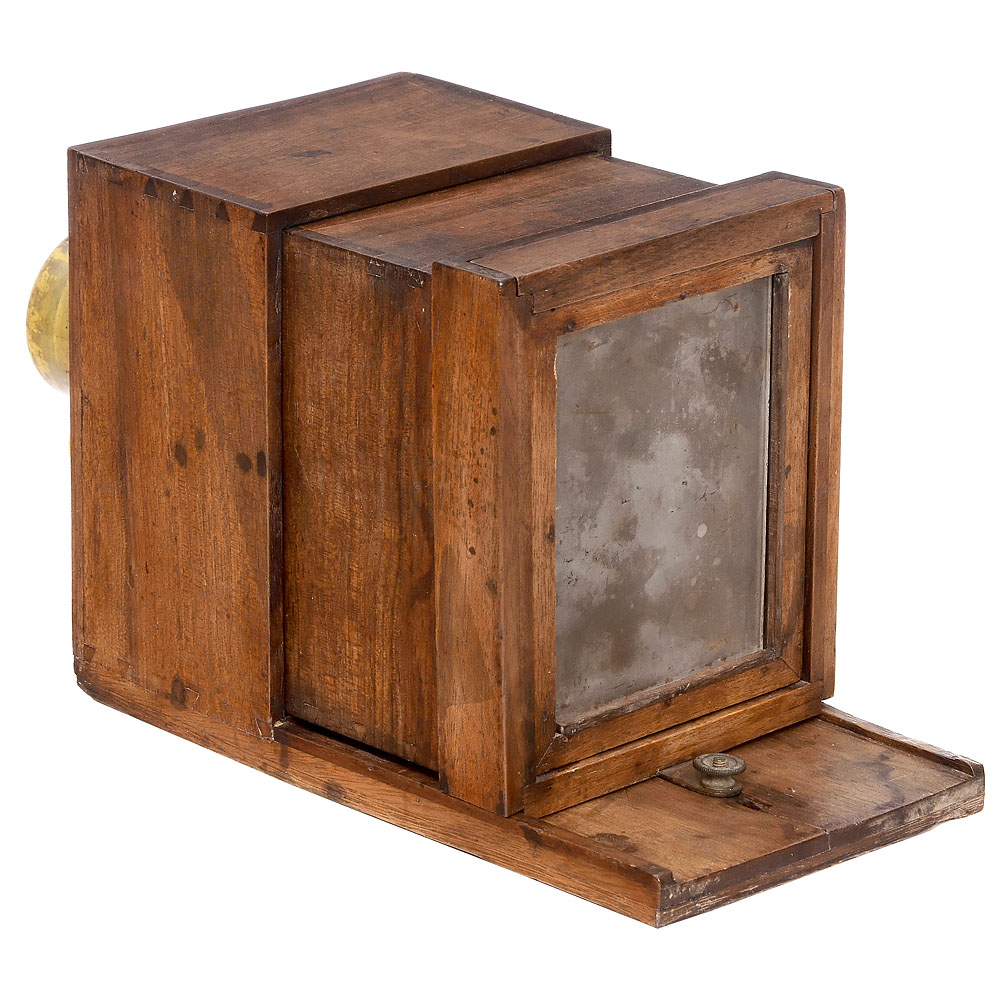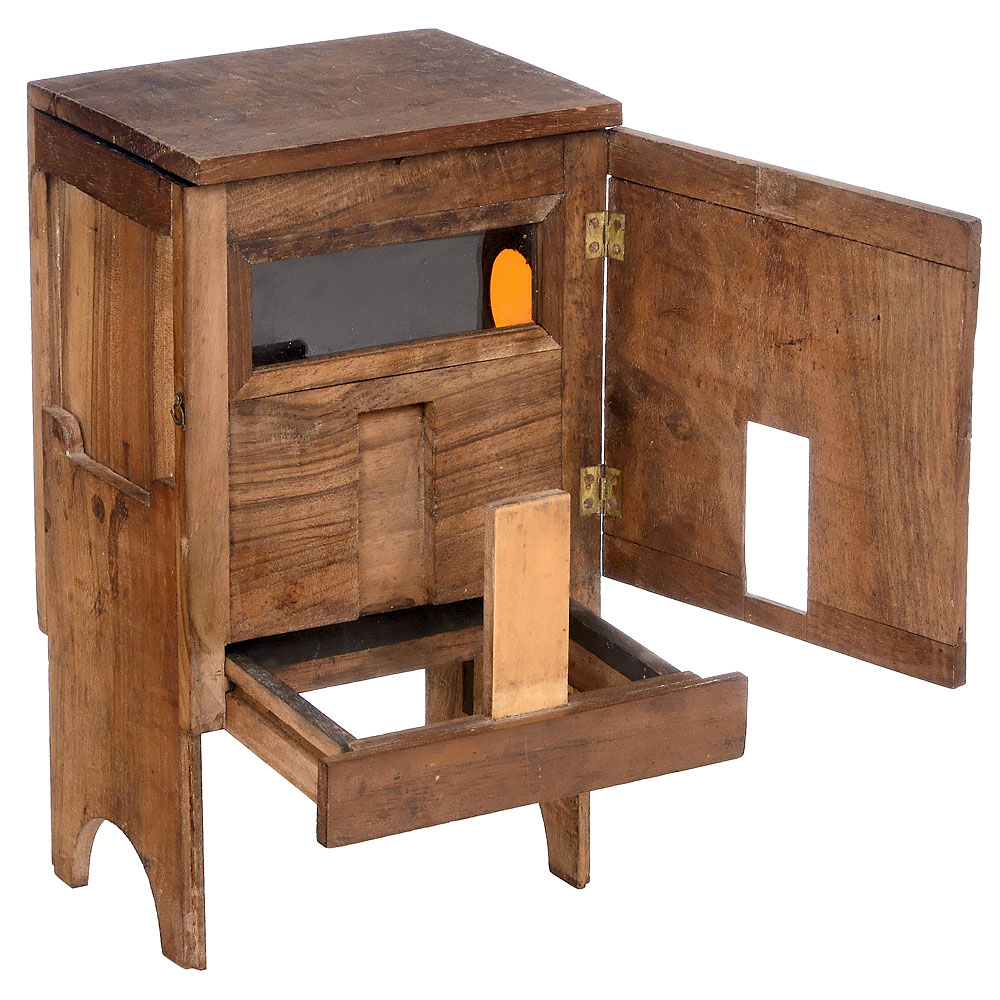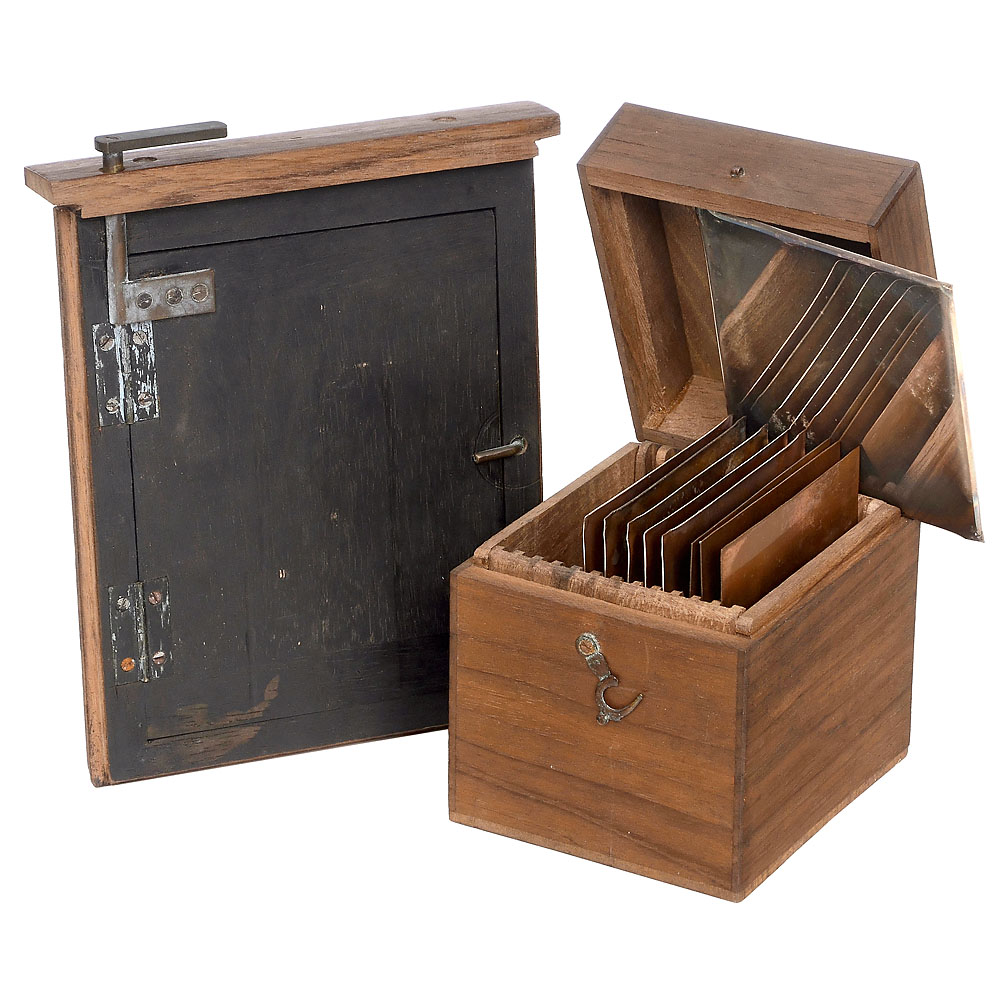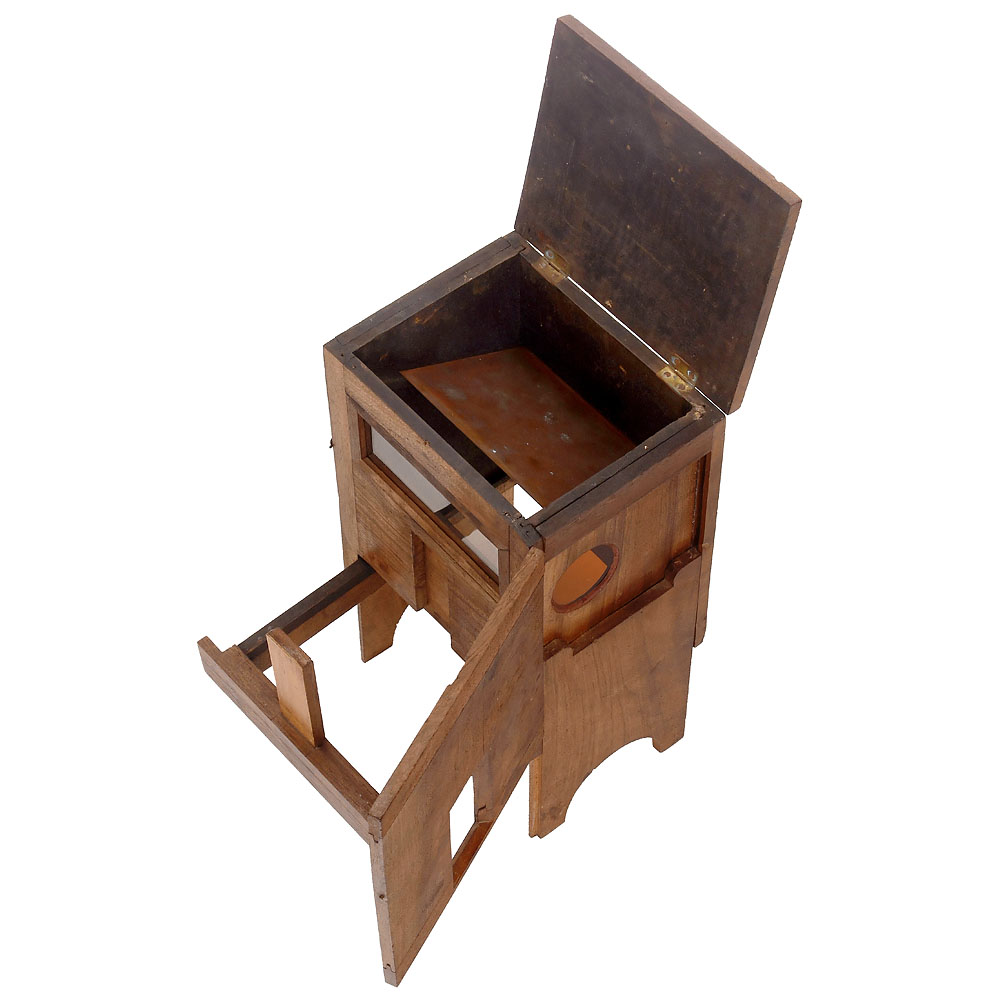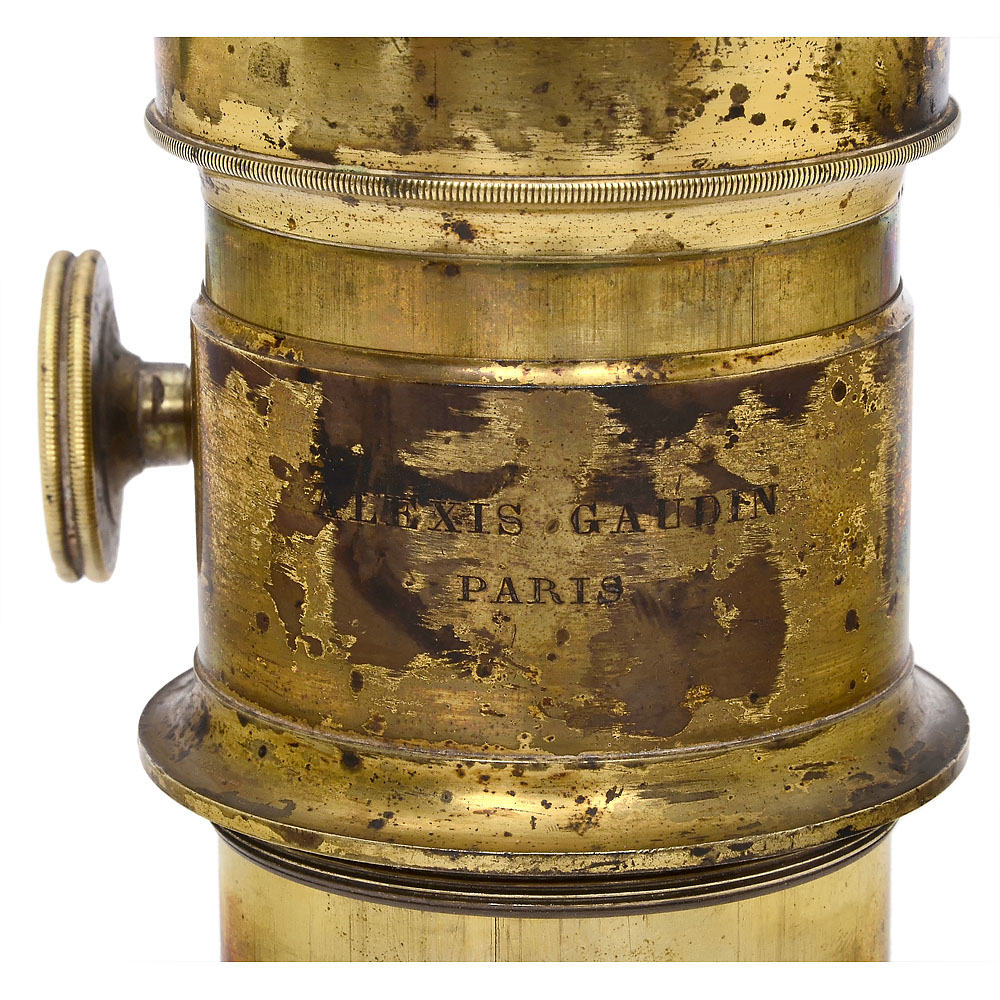Gaudin Daguerreotype Camera, 1842 onwards
Starting bid: € 8.000 | Estimate: € 15.000 – 25.000
Alexis Gaudin (1816–1894), brother of Marc Antoine Gaudin (1801–1880), Paris. – Camera: Sliding box camera, 13.8 x 17.5 x 25.6 cm, for quarter-plate format (108 x 81 mm), the removable focusing screen has a format of 91 x 114 mm. – Lens: Engraved “Alexis Gaudin Paris”, a very early version still without a number, Petzval type, approx. 3.2/13 cm, good edge sharpness with very little field curvature, the rear lens is still originally crimped and unopened (therefore some age-related deposits on the inside, cleaning is possible in a specialist workshop), focusing works, with brass cap. – Cassette: Quarter-plate, instead of a slider that can be pulled up, a hinged flap is opened by a lever (no risk of light entering through the slit!). – Da-guerreotype iodizing and developing box for quarter plates: 11.4 x 14.2 x 24.6 cm with the legs extended. The front panel has a hinged light-shielding door, allowing the iodizing and developing process to be observed through the glass pane. A drawer (without mesh and without any holes for a thermometer) slides out, on which a light yellowish piece of wood is mount-ed vertically, the light yellow color that indicates the degree of full sensitivity during iodizing. A 3.3 cm opening on the side is fitted with a brown glass. With a quarter plate measuring 107 x 80 mm, stamped “30”. – Daguerreotype plate transport box: 79 x 90 x 91 mm, for 12 sixth plates (81 x 72 mm, can be inserted into the cassette), with 6 faceted silver plates stamped “30” and 3 flat silver plates stamped “40”. – An original piece of equipment from the early days of photography.
Daguerreotyp-Kamera Gaudin mit Entwick-lungskasten, ab 1842
Alexis Gaudin (1816–1894), der Bruder von Marc Antoine Gaudin (1801–1880), Paris. – Kamera: Schiebekastenkamera 13,8 x 17,5 x 25,6 cm für das Format Viertelplatte (108 x 81 mm). Die herausnehmbare Mattscheibe hat das Format 91 x 114 mm. – Optik: Graviert “Alexis Gaudin Paris”, sehr frühe Version noch ohne Nummer, Petzval-Typ ca. 3,2/13 cm, gute Randschärfe bei recht wenig Bildfeldwölbung .Die Rücklinse ist noch original verbördelt und ungeöffnet (darum innen etwas Altersbelag, Reinigen in einer Fachwerkstatt möglich). Trieb funktioniert, mit Messing-Deckel. – Kassette: Viertelplatte, anstelle eines nach oben ziehbaren Schiebers wird über einen Hebel eine Klappe an einem Gelenk geöffnet (keine Gefahr von Lichteinfall durch Schlitz!). – Daguerreotyp-Jodierungs- und Entwicklungskasten für Viertelplatte: 11,4 x 14,2 x 24,6 cm bei herausgezogenen Beinen. Frontseitig schwenkbarer Lichtschutztür, wo dann durch die Glasscheibe der Jodierungs- bzw. Entwicklungsprozeß beobachtet werden kann. Ein Schubfach (ohne Netz-Bespannung und ohne irgendeine Bohrung für ein Thermometer) ist herausziehbar, auf dem ein hellgelbliches Holzstück senkrecht nach oben zeigend gefaßt ist, jene hellgelbe Farbe, die beim Jodieren den Grad der vollen Empfindlichkeit anzeigt. Seitlich ist eine 3,3 cm große Öffnung mit einem Braunglas versehen. Mit einer Viertelplatte 107 x 80 mm, gestempelt “30”. – Transportkästchen für Daguerreotyp-Platten: 79 x 90 x 91 mm, für 12 Sechstelplatten (81 x 72 mm, sind in der Kassette einlegbar), mit 6 facettierten Silberplatten gestempelt “30” und 3 flachen Silberplatten gestempelt “40”. – Eine Original-Ausrüstung aus der Anfangszeit der Photographie.


